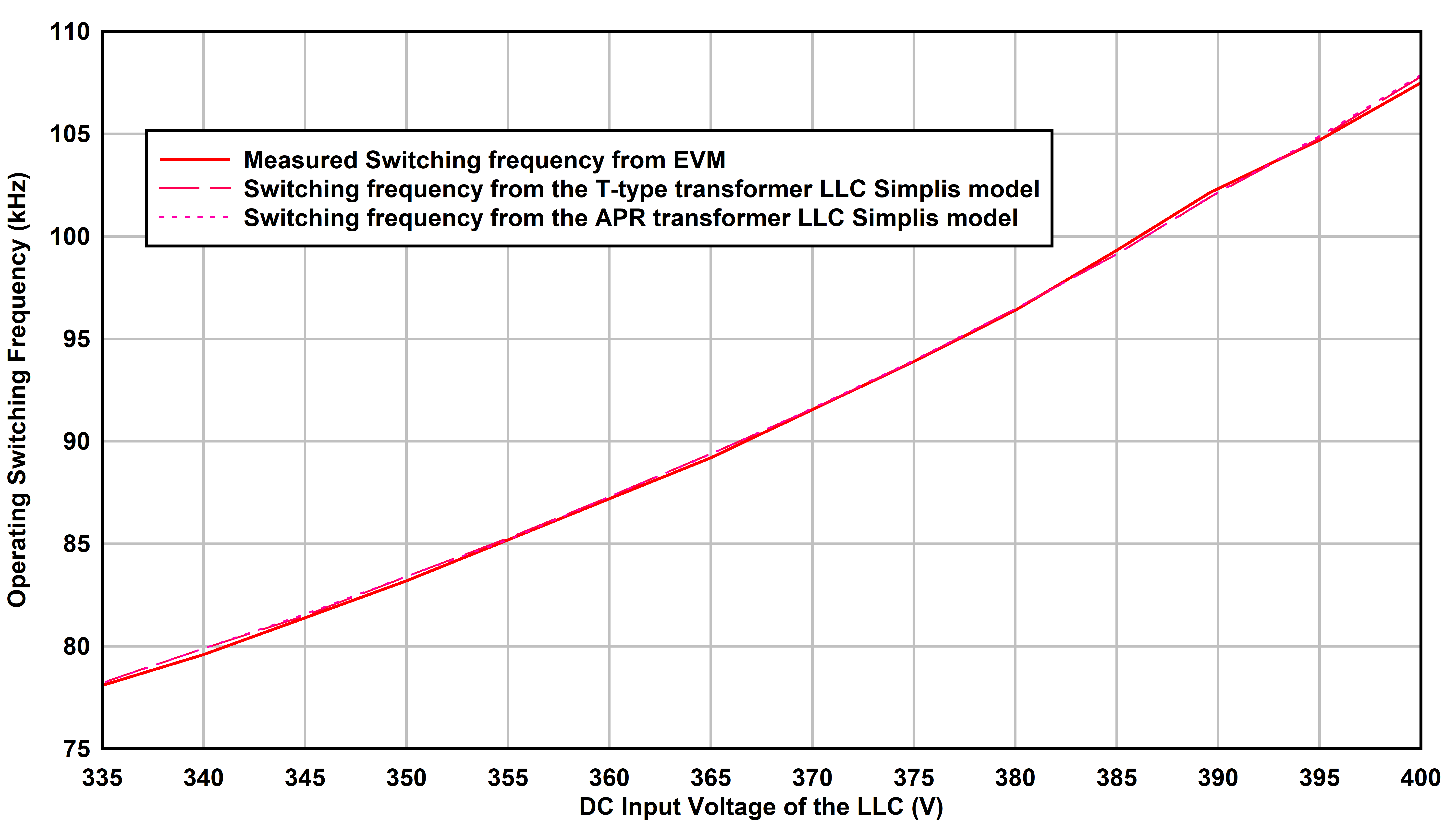SLUAAL2 june 2023 UCC256402 , UCC256403 , UCC256404
- 1
- Abstract
- Trademarks
-
1UCC25640x Frequently Asked Questions
- 1.1 For the Time Domain Simulation and Fundamental Harmonic Analysis of LLC Resonant Converters, What Model of the Transformer Should be Used?
- 1.2 How to Connect External Gate Drivers to the UCC25640x for High Gate Driver Current Capability?
- 1.3 When Powering on the PFC-LLC AC-DC Converter, What Sequence is Recommended?
- 1.4 How to Eliminate the Nuisance ZCS Detection During the Light Load?
- 1.5 What is the Purpose of Maintaining the FB Pin Voltage of the UCC25640x Controllers at a Constant Level?
- 1.6 How to Improve the Slew Rate Detection at HS Pin of the UCC25640x Controller?
- 1.7 How to Operate the UCC25640x Controller in the Open Loop?
- 1.8 What Happens if the VCR Pin Peak to Peak Voltage of the Controller Exceeds 6 V?
- 1.9 What UCC25640x settings effect the startup duration of the LLC?
- 1.10 What is Causing the Current Imbalance in the LLC's Secondary Side Windings?
- 1.11 How to Design TL431 Compensator for LLC With UCC25640x Controller
- 1.12 How to Design LLC for Battery Charging and LED Driver Applications?
- 1.13 How to Implement CC-CV Feedback Control?
- 1.14 What is the Simplest Approach to Configure the Burst Mode Thresholds for UCC25640x Based on the Load Power?
- 1.15 How to Avoid the UCC25640x Controller to Enter into Burst Mode?
- 1.16 What are the Methods for Preventing VCC From Decreasing Below the VCC Restart Threshold During Burst Mode?
- 1.17 How Does BMTL Threshold Value Impacts the Output Voltage Ripple and the VCC Pin Voltage and Magnetizing Current?
- 1.18 How to Design Magnetics for LLC?
- 1.19 How is the Dead Time in UCC25640x Determined During ZCS Detection and in the Absence of Valid Slew Rate Detection?
- 2References
1.1 For the Time Domain Simulation and Fundamental Harmonic Analysis of LLC Resonant Converters, What Model of the Transformer Should be Used?
The LLC topology can be realizable with the following:
- An external inductor and a tightly coupled transformer, or
- With a integrated transformer with a poor coupling which integrates both resonant and magnetizing inductors.
In both of these implementations, the transformer can be modeled as T-type [1] or APR models which are shown in the following images. These two models can be used for both time domain simulation and also for fundamental harmonic analysis. Equation 1, Equation 2, Equation 3 describe the behavior of all the models given in Figures 1 to 4. Reference [2] shows the different transformer model derivations from a coupled inductor transformer model. Also, the videos given here: Clarifying Coupled Inductor and Transformer Modeling, Transformer leakage in LLC converters, Leakage models of multi-winding transformer and implications to LLC converter demonstrates different transformer models and their performance using spice simulation tool.
 Figure 1-1 Mutual Inductance
Model
Figure 1-1 Mutual Inductance
Model Figure 1-3 T Type Transformer Model
Considering Coupling Coefficient k
Figure 1-3 T Type Transformer Model
Considering Coupling Coefficient k Figure 1-2 T Type Transformer
Model
Figure 1-2 T Type Transformer
Model Figure 1-4 All Primary Referred (APR)
Model
Figure 1-4 All Primary Referred (APR)
Modelwhere L1, L2, M, k are primary open circuit inductance, secondary open circuit inductance, mutual inductance, coupling coefficient respectively.
The parameters of the models shown above can be calculated from the transformer data sheet parameters where primary open circuit Inductance (Lp) and primary inductance when secondaries are short (Llk), turns ratio are provided.
 Figure 1-5 T-type Transformer Model for
LLC Design and Analysis
Figure 1-5 T-type Transformer Model for
LLC Design and Analysis Figure 1-6 APR-Type Transformer Model for
LLC Design and Analysis
Figure 1-6 APR-Type Transformer Model for
LLC Design and AnalysisTo validate models, a closed loop simplis simulation with both T-type model shown in Figure 1-5 and APR model shown in Figure 1-6 has been built with the same transformer parameters as that of UCC25640x EVM hardware [3] where integrated transformer from Wurth Electronics [4] is used. In the transformer data sheet, Lp, Llk, n are given as 510uH, 82uH, 16.5 respectively. From Equation 4, Equation 5, Equation 6, the parameters of the transformer obtained as k =0.916, L1=510uH, n=16.5, k*n=15.115. Figure 1-7 shows the comparison between EVM measurements and closed loop Simplis models. We can observe that in all the cases the operating frequency is almost same for a given input voltage.
 Figure 1-7 Input Voltage vs Switching
Frequency From Closed Loop Simulation Model and From the EVM Measurements at 12
V, 15 A Load
Figure 1-7 Input Voltage vs Switching
Frequency From Closed Loop Simulation Model and From the EVM Measurements at 12
V, 15 A Load